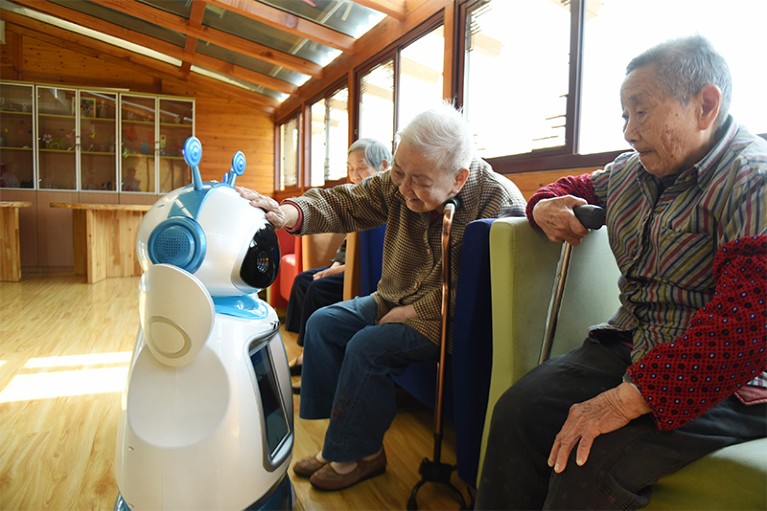
People at a social welfare centre interact with the service robot 'A Tie' in Hangzhou, China.Credit: Visual China Group/Getty Images
When computational biologist Jing-Dong Han moved back to China from the United States in 2005, she found it difficult to convince other scientists there that her research goals were serious.
Han wanted to focus on the science of ageing, an area that did not yet have its own funding stream in China. “Many of my peers told me this was not a real scientific research field,” she says.
Nature Spotlight on brain sciences in China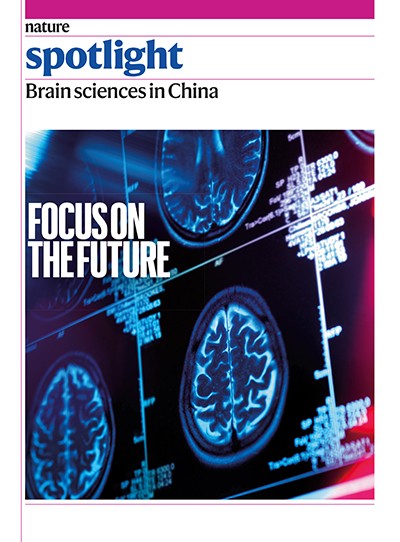
Han’s background in biomedical science, combined with her work as a software engineer and in computational biology, made her confident that she could prove them wrong. She wanted to deploy the same cellular approaches that she had used in the United States to investigate cancer to probe how the body ages.
“I hoped this information could potentially be used to help people better understand and manage their health needs as they grow older,” she says.
China’s population is getting old. A decline in the birth rate between 1980 and 2015 as a result of the nation’s one-child policy, combined with increased longevity, will see the proportion of people aged 65 and older triple between 2006 and 2050, to reach almost one-quarter of the population.
The consequences of such a sharp demographic change will be substantial. One-fifth of the population already has neurodegenerative or neuropsychiatric disorders, and the number with age-associated diseases such as stroke, Alzheimer’s, Parkinson’s and lung cancer will rise (see ‘Age-associated diseases’). By 2030, the number of citizens with at least one long-term disorder is expected to be three times higher than it is today (see go.nature.com/3dd66bw).
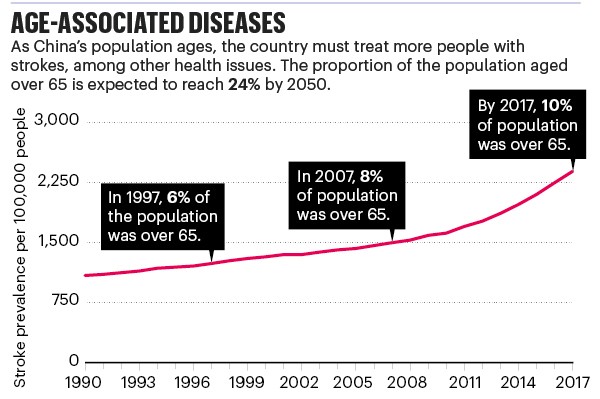
Sources: Z. Li et al. Br. Med. J. 364, L879 (2019)/World Bank
For Han, the realization among policymakers in the time since she’s moved back to China that the country’s health-care system needs to change to cope with the unprecedented demand from elderly citizens has provided momentum for her work. In around 2015, funding agencies in China started to enlist scientists to discuss and propose strategies to address the challenges from population ageing, she says, and that has led to the initiation of dedicated grant tracks and an ever-growing ageing-research community.
Han spent the first five years back in China exploring how genes interact during the ageing process, before being asked in 2010 to lead a pilot project in Shanghai. The Partner Institute for Computational Biology, a collaboration between the Chinese Academy of Sciences (CAS) and the German Max Planck Society, uses computational methods to extract patterns from huge gene and protein data sets to better understand how our cells and body age, among other goals.
In 2015, after publishing numerous studies about ageing in worms and mice, Han and her team published their first work in humans, based on a relatively small cohort of 300 people. It showed how algorithms can use 3D facial images to predict how fast a person is ageing (W. Chen et al. Cell Res. 25, 574–587; 2015). She also secured a grant of 1.9 million yuan (US$270,000) from the Ministry of Science and Technology (MOST). Then, last July, she moved to Peking University in Beijing, and now hopes to publish work on 5,000 individuals.
Ageing research is still very much an up-and-coming field, says Han, but “even if you can’t provide startling results right now or immediately describe how it will be applied, ageing-related research needs to be done urgently in the social context of China”.
A new field for old problems
Between 2008 and 2018, the number of papers on geriatrics and gerontology published by researchers at Chinese institutions tripled.
In 2016, the Chinese government announced the Healthy China 2030 plan, a national policy to address the country’s long-term health-care challenges. The policy includes a range of interventions to promote health in elderly people, such as encouraging a balanced diet and better fitness, and discouraging smoking.
In the same year, the director of the CAS Institute of Neuroscience, Mu-ming Poo, outlined details of the country’s most ambitious neuroscience programme, the China Brain Project, whose remit includes improving our understanding of autism spectrum disorder, depression and neurodegeneration (M.-M. Poo et al. Neuron 92, 591–596; 2016).
Then in 2017, the National Natural Science Foundation of China (NSFC) announced a research project with dedicated funding called Organ Aging and Degeneration Mechanisms, through which Han received 2.4 million yuan the following year. And in 2018, MOST launched a programme known as Active Health and Technology Against Aging.
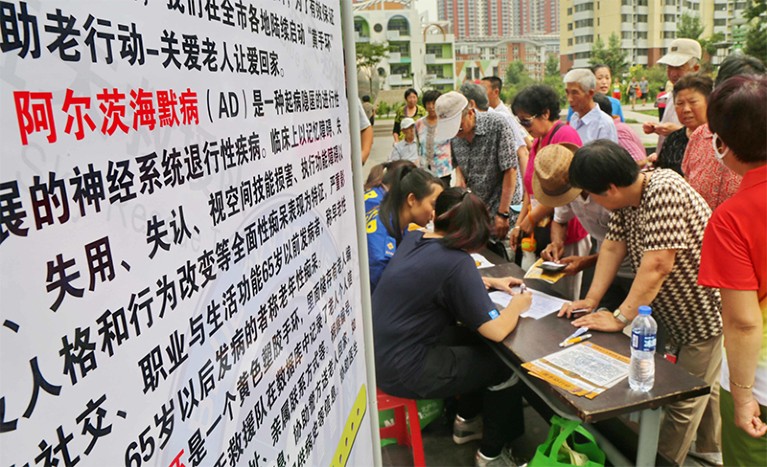
China's yellow bracelet project aims to help people with Alzheimer's disease.Credit: Imaginechina Limited/Alamy
All these efforts are designed to push the development of services and research for senior citizens in China forwards, says Weiping Jia, who runs the Shanghai Institute of Diabetes at Shanghai Jiao Tong University.
The government has also funded centres for basic and clinical ageing research, including the CAS Institute of Stem Cell and Regeneration and the Aging Research Center at Peking University, both in Beijing.
However, James Kirkland, head of the Robert and Arlene Kogod Center on Aging at the Mayo Clinic in Rochester, Minnesota, says that more commitment might be needed, given the size of the problem.
The neurobiologist studying how the brain changes as it ages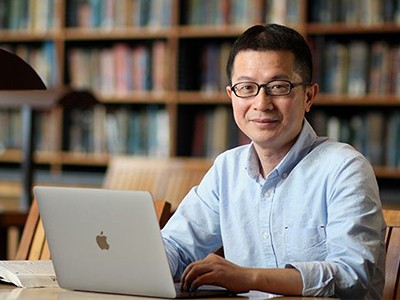
“I think they’re on a knife-edge,” he says. “Is this going to be one of the scientific challenges they invest in heavily, or perhaps they’ll focus on another research area, such as some form of new space exploration? I don’t think they’ve made that key decision yet to push this kind of systems biology forward as a critical priority.”
Geriatrics scientists in China are keen to tap into the country’s massive and homogeneous population by using large-scale studies to generate reliable data on how people age.
The nation has already prioritized the use of big data and artificial intelligence in medicine. Its Healthy China plan, for example, will involve building more data centres to collect and combine medical records that are currently spread across separate departments.
National investment
In 2018, MOST awarded 15 million yuan to Piu Chan, director of the Chinese National Clinical Research Center for Geriatric Disorders at Xuanwu Hospital, Capital Medical University, in Beijing. The grant was so that Chan, a neurologist who researches Parkinson’s disease, could use patients’ electronic medical records to build a national database of information about neurodegenerative conditions. Given that nearly 60% of people with Parkinson’s live in China, that could become a valuable resource for researchers around the world.
Chan is now working with biologist Gang Pei, who is at Tongji University in Shanghai and researches drugs that could reduce the effects of Alzheimer’s disease on cognitive decline, to get the database off the ground. It can be tough to convince different government offices to share information, Pei says, because there is little precedent for this kind of national collaboration. “We need to all agree on the rules of how data are shared, how they will be used, what form they come in and who will receive the benefit of any scientific achievement,” he says.
Pei would also like to see China develop a repository for tissue samples that can be used by neuroscientists and clinical researchers throughout the nation, as well as worldwide, but says that’s likely to be stymied by the stigma attached to organ donation in the country.
“We don’t have this tradition. We think the body is sacred. So we need to teach people why they should agree to donate their body to medical science for the greater good.”
Guanghui Liu, a stem-cell researcher at the CAS Institute of Stem Cell and Regeneration in Beijing and president of the Chinese Society of Aging Cell Research, says that as well as overcoming cultural challenges, research areas will need to be integrated better if the field is to make progress. “In China, we need cross-disciplinary integration of areas such as biomedicine, physics, chemistry, engineering, bioinformatics and artificial intelligence,” he says. “That’s probably our greatest challenge to promote the development of the field.”

 The neurobiologist studying how the brain changes as it ages
The neurobiologist studying how the brain changes as it ages
 Big data helps to tackle diabetes in Shanghai
Big data helps to tackle diabetes in Shanghai







